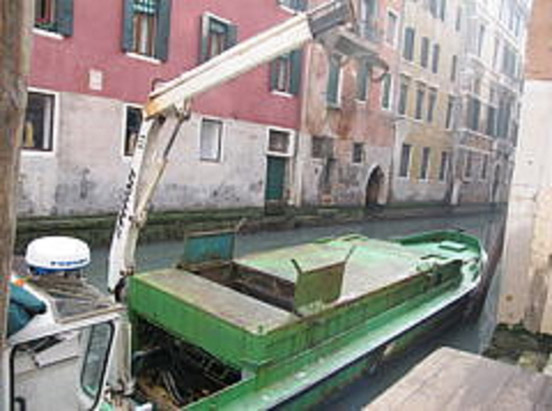- Waste management in Japan
- Circular economy in Japan
- Waste management in Asia
- Disaster waste management
Waste Issues and World Heritage Sites
Do you think that a World Heritage Site and waste issues are two different topics? Waste, however, can cause big problems and spoil the significance of a World Heritage Site. I have studied the socio-economic impact of World Heritage Sites, and would like to show you a glimpse of the correlation between World Heritage Sites and waste. In order to be included in the list of UNESCO (United Nations Educational, Scientific and Cultural Organization) World Heritage Sites, the site has to fulfill many criteria from a technical standpoint. In addition, Outstanding Universal Value is an absolute requirement. Currently, in July 2012, there are 962 designated sites all over the world, included in the list of World Heritage Sites.
World Heritage Sites are commonly recognized as "branding of world-famous tourist destinations," in addition to their background and other requirements for getting on the list. Being a popular tourist destination after registration as UNESCO World Heritage Site also brings a big issue, waste.
Venice, Shiretoko (Hokkaido, Japan), and the Grand Canyon
These are all UNESCO World Heritage Sites.
They also have another point in common. That is, an increased amount of waste in the areas surrounding the sites from tourism development.
Venice, Italy was already a prospering tourist destination even before it was included on the list of World Heritage Sites. After inclusion in the list, tourists seeking to visit a World Heritage Site have increased exponentially. As a result, residents moved out of the old town, and more hotels, restaurants and souvenir shops moved in. This resulted in changes in the volume and type of waste. The city of Venice and the waste operators worked together to address this issue, and as a result, its recycling rate increased to 50% in 2011. However, they could not reduce the generation of waste from tourists. This was due to incentives, that recycling is not an issue tourists usually care about at their travel destinations, and the large volume of waste generated by hotels, where many things are disposed of after a single use. There is also an issue with waste collection management. In the old town such as Venice, where many canals surround the area, the alleys are too narrow for waste collection trucks. This means that after collection officers gather the waste in one area, waste collection boats (see Fig. 1) have to take them to a waste collection site. However, as the number of tourists increased, due to the increase of waste volume, the boats increased their rounds. Waste collection management became difficult as waste collection during the daytime when many tourists were visiting is not welcomed by tourists.

Let's look at the domestic situation. Shiretoko in Hokkaido was included in the list of World Heritage Sites in 2005. Although the rapid and sharp increase did not last for so long, more tourists visited the site, which meant that human waste and used toilet paper at outdoor toilets increased rapidly as a result. When you visit somewhere to enjoy the scenery, you don't want to see scattered toilet paper. Later, portable toilets became available for purchase and collection boxes for these toilets were provided at rest points, which improved the situation. The Grand Canyon National Park in the US is also one of the listed World Heritage Sites, and they also began to see used toilet paper in the park, as at Shiretoko. Consequently, the park requires visitors to bring portable toilets when they enter the park.
Mt. Garbage: Clean Mt. Fuji's bad image!
Our Mt. Fuji is a new candidate for a UNESCO World Heritage Site (as of 2012), which Japan is actively promoting. Mt. Fuji was for a long time listed to be considered as a World Heritage site candidate, but it could not be nominated. One of the reasons was its waste issue. You may already know that UNESCO officials once visited Mt. Fuji and commented about the tremendous volume of illegal littering, what they called "a very sad reality." Another reason for nomination delay was "no established system for management of waste and human waste."
Since then, many years have passed, and the efforts of both management and visitors have paid off. Littering has been reduced and more visitors are following the rule of thumb, "If you make any waste, take that waste home." Currently, UNESCO officials are examining to see if Mt. Fuji has achieved "Outstanding Universal Value." As early as June next year, it may be on the list of World Cultural Heritage Sites.
Currently, in order to be included, countries are required to develop a World Heritage Site management plan that conforms to their relevant existing law. In the plan, one required item is waste management to protect the surrounding environment. Discarded waste may impact the ecosystems of a Natural Heritage Site and impair the scenery of a World Heritage Site that features cultural heritage or scenery. As I mentioned, any World Heritage Site faces the situation of an increase in tourists causing an increase in waste. Management capabilities of World Heritage Sites have also become required, such as certain implementation of countermeasures for any issues arising due to development.
When you next visit a World Heritage Site, I hope you will take your waste home with your memories rather than leaving it behind.


